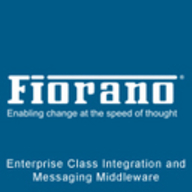

Fiorano ESB and Mule ESB are competitors in the enterprise service bus market. Mule ESB is generally viewed as the superior product due to its extensive feature set, despite Fiorano ESB's competitive pricing and support options.
Features: Fiorano ESB offers strong integration capabilities, focusing on simplicity in data routing and transformation. It promotes efficient event processing. Mule ESB provides advanced API management and comprehensive cloud support with tools for real-time integration across platforms. It boasts a broader feature set with extensive support for various deployment strategies and a wide range of connectors, offering great flexibility.
Room for Improvement: Fiorano ESB could benefit from enhanced API management, broader cloud support, and additional connectors. Improving user interface and scalability would further increase its appeal. Mule ESB might improve by simplifying its deployment process, providing more direct customer support, and reducing its high investment costs. Further simplification of user experience would enhance its usability.
Ease of Deployment and Customer Service: Fiorano ESB is praised for its straightforward deployment and customer-focused service approach, ensuring seamless setup and support. Mule ESB, while more complex in deployment due to its wide-ranging capabilities, results in a scalable platform. Both provide reliable service, with Fiorano emphasizing direct support and Mule benefiting from extensive documentation and community forums.
Pricing and ROI: Fiorano ESB is noted for cost-effective pricing, suitable for smaller organizations or those with budget constraints. Conversely, Mule ESB requires a larger initial investment which is often justified by its extensive functionality and scalability, potentially leading to a significant return on investment in the long term.
| Product | Market Share (%) |
|---|---|
| Mule ESB | 17.6% |
| Fiorano ESB | 1.9% |
| Other | 80.5% |

| Company Size | Count |
|---|---|
| Small Business | 23 |
| Midsize Enterprise | 6 |
| Large Enterprise | 36 |
We monitor all Enterprise Service Bus (ESB) reviews to prevent fraudulent reviews and keep review quality high. We do not post reviews by company employees or direct competitors. We validate each review for authenticity via cross-reference with LinkedIn, and personal follow-up with the reviewer when necessary.